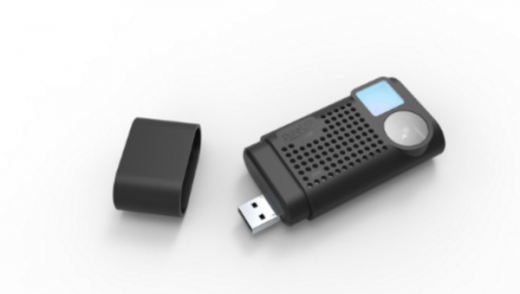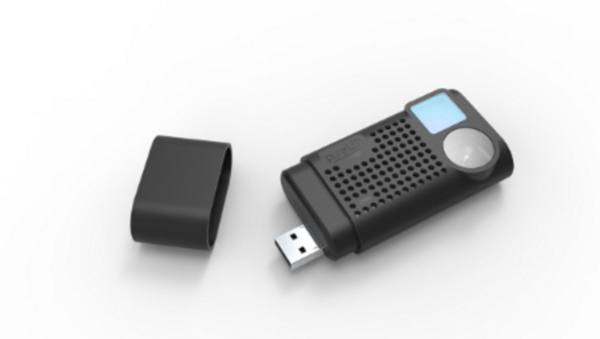PureLiFi is developing a possible alternative to WiFi
PureLiFi is developing a possible alternative to WiFi

WiFi has become so omnipresent that losing signal for five minutes feels like the end of civilisation, but there may be a new contender on the horizon that uses light instead of radio waves to send data.
PureLiFi, a spin out project from the University of Edinburgh, was created in 2011 by professor of mobile communications, Professor Harald Haas.
See Also: Ericsson: IoT connections will crush mobile by 2018
For the past five years, PureLiFi has been building a range of devices to turn this concept into a reality. It launched its first product, the Li-1st, in 2014.
The first device required an Ethernet connected LED light in sight of a desktop transceiver. The transceiver was like a large external hard-drive that would send data to the computer via USB.
A year later, in 2015, PureLiFi improved the design with the launch of Li-Flame, but the transceiver was still bulky and lacked the speed capabilities of modern WiFi receivers.
In 2016, it raised $ 2 million in venture capital and launched LiFi-X, its third generation device that massively reduced the receiver’s footprint and improved speeds to 40 mbps downlink and uplink.
Despite the upgrades over the past three years, LiFi is still unknown to most outside the industry. PureLiFi doesn’t sell any of its devices on its website or Amazon.
Even with the lack of commercial availability right now, could LiFi become an actual alternative to WiFi in the next few years?
It all depends if the deficiencies of WiFi are enough to adopt an entirely new and more convoluted system. Right now, to make LiFi work, you need to install an Ethernet LED light (preferably overhead), which would most likely require an electrician, alongside a chunky dongle.
That’s a lot compared to the standard WiFi setup; usually set up when you buy an internet package. WiFi comes with plenty of other advantages like being ubiquitous wherever you travel as well. You can get WiFi in most hotels, at most homes, and even in public areas nowadays.
Could IoT be a portal to success?
It seems almost impossible that LiFi would replace WiFi as a commercial wireless service, but it may be useful for Internet of Things (IoT) applications.
Prof Haas mentions IoT quite a few times in announcements, clearly positioning LiFi as a possible alternative to WiFi for small, low-power devices. LiFi is not constrained by range in the same way as WiFi, it can be contained into a single room or pushed for miles.
That constraint may be useful for security IoT projects. CCTV cameras that send video straight to the cloud or secure doors that are opened by NFC are two possible areas where LiFi is superior to WiFi, due to hackers not being able to intercept the connection.
We could also see LiFi deployed into agriculture IoT projects, using an LED floodlight. PureLiFi haven’t looked into this, but theoretically if the light only needs to touch a device we could see an entire field of connected sensors powered by LiFi in the future.
See Also: Open wireless standards could chop city costs by nearly a third
In time, we may see LiFi and WiFi intertwined in the home, but for that to happen we would need LiFi sensors that are embedded into devices. Prof Haas mentioned rumors of Apple exploring LiFi connectivity on iOS 9.0 earlier this year, but no mention of the functionality was made at WWDC 2016.
If the iPhone 7 does feature the wireless technology, we could see LiFi take off in a major way. Apple is one of the most influential companies when it comes to tech adoption over the past decade, with USB-C the latest in the trend.
The post PureLiFi is developing a possible alternative to WiFi appeared first on ReadWrite.
(16)














